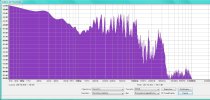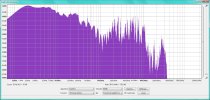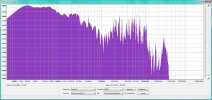Divide by Zero
The Living Force
Even before mp3's a lot of studios started to use digital technology via tapes.
It was a way for them to store things without degradation. Every time you copy analog, it gets worse.
Back in the day when I was big on the music equipment, the good DACs did smoothing. The 44,100 times a second with lets say even just 20,000 or 10,000 steps of volume was smoothed out very easily. Even if it is not 100% accurate, analog mediums aren't either.
The noise of pops and cracks induced by a record or the quality lost through magnetic analog tapes is as disrupting to the waveforms as a badly encoded file. With age, records and tapes develop more imperfections. CD's do too, but they have a crude error correction that can handle up to a certain amount of errors per "frame".
I couldn't think that a tape that has a smaller range of sound or a record played with a bad needle would be any better than the digital copy. Analog itself is "sampling" too, just instead of using a digital source frequency, they used crystals (analog frequency) and tubes (analog amplifiers). If you want to go to pure analog, maybe those record players that used a physical needle and cone amplifier would be the purest, but they did sound pretty bad, lol.
I'm not sure about photography in particular. I think the same applies where the quality of the film would determine the output. Also the compression for digital can kill detail, like in some pictures you can see banding (where there is lines between the shades of blue in the sky for example) but that's depending on how hard you try to make the file small.
As for EMF, any sound can be potentially an EMF. But we don't really push much current on speakers unless you like those crazy subs. But also keep in mind you have both wires together, their induced magnetic fields cancel out. With AC house wiring that is not always so, especially because one circuit can split and feed multiple outlets.
The biggest source of EMF on the amplifier would be from a ground loop (the buzzing you can hear on speakers if you interconnect 2 different devices on different outlets) or the internal power conversion (transformer or those nasty switching power supplies- most of which are unshielded).
I'm convinced the music is messed up by the mixing and not the technology. Maybe in the beginning of itunes/mp3's, yes the encoding compression was very bad on some files- but nowadays they run excess bitrate, or a constant quality encoder.
There is even a format called FLAC which is lossless and can do 24/32 bits, up to 192,000 hz!
It was a way for them to store things without degradation. Every time you copy analog, it gets worse.
Back in the day when I was big on the music equipment, the good DACs did smoothing. The 44,100 times a second with lets say even just 20,000 or 10,000 steps of volume was smoothed out very easily. Even if it is not 100% accurate, analog mediums aren't either.
The noise of pops and cracks induced by a record or the quality lost through magnetic analog tapes is as disrupting to the waveforms as a badly encoded file. With age, records and tapes develop more imperfections. CD's do too, but they have a crude error correction that can handle up to a certain amount of errors per "frame".
I couldn't think that a tape that has a smaller range of sound or a record played with a bad needle would be any better than the digital copy. Analog itself is "sampling" too, just instead of using a digital source frequency, they used crystals (analog frequency) and tubes (analog amplifiers). If you want to go to pure analog, maybe those record players that used a physical needle and cone amplifier would be the purest, but they did sound pretty bad, lol.
I'm not sure about photography in particular. I think the same applies where the quality of the film would determine the output. Also the compression for digital can kill detail, like in some pictures you can see banding (where there is lines between the shades of blue in the sky for example) but that's depending on how hard you try to make the file small.
As for EMF, any sound can be potentially an EMF. But we don't really push much current on speakers unless you like those crazy subs. But also keep in mind you have both wires together, their induced magnetic fields cancel out. With AC house wiring that is not always so, especially because one circuit can split and feed multiple outlets.
The biggest source of EMF on the amplifier would be from a ground loop (the buzzing you can hear on speakers if you interconnect 2 different devices on different outlets) or the internal power conversion (transformer or those nasty switching power supplies- most of which are unshielded).
I'm convinced the music is messed up by the mixing and not the technology. Maybe in the beginning of itunes/mp3's, yes the encoding compression was very bad on some files- but nowadays they run excess bitrate, or a constant quality encoder.
There is even a format called FLAC which is lossless and can do 24/32 bits, up to 192,000 hz!





 In fact many great classic albums were recorded this way.
In fact many great classic albums were recorded this way.